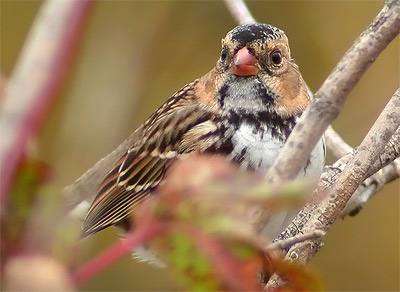
Harris's Sparrow
When I study range maps of closely related bird species, I often see patterns that yell out speciation and descent from common ancestor. I still find it bizarre, even with all the overwhelming evidence available today, about half the population of the United States continues to deny biological evolution, dismissing it (and misusing a word in the scientific context in the process) as a mere theory, as if only a guess.
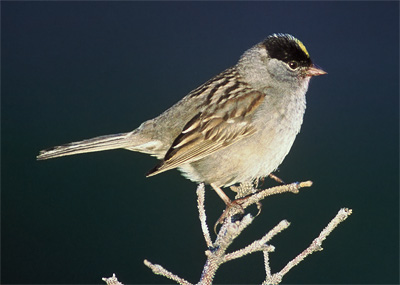
Golden-crowned Sparrow
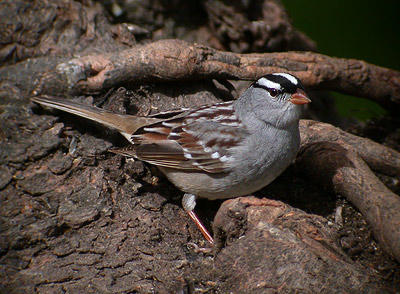
White-crowned Sparrow
Consider zonotrichia sparrows: Golden-crowned, White-crowned, White-throated and Harris's Sparrow. Not only do these unique sparrow species share similar appearance, behavior and some vocalizations, their individual breeding range distributions show a virtual overlaying puzzle map that fits together. If you take a look at ranges of other groups of closely related bird species, you'll find these overlaying map puzzles again and again. This is all part of the science of biogeography.
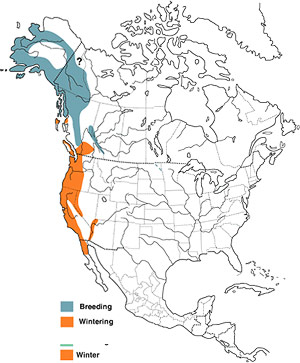
Golden-crowned Sparrow
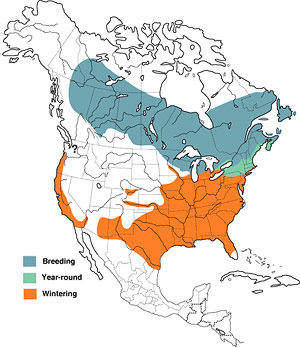
White-throated Sparrow
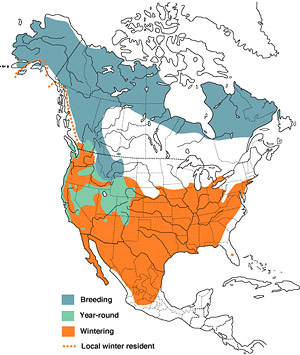
White-crowned Sparrow
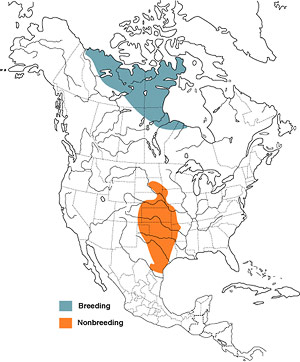
Harris's Sparrow
Genetic evidence suggests that White-crowned Sparrow diverged from Golden-crowned Sparrow around 50,000 years ago and these two sister species diverged from White-throated Sparrow about 750,000 years ago. All three diverged from Harris's Sparrow over a million years ago. In looking at these maps and particular birds, my imagination runs wild envisioning what events took place over geological time that ultimately led to these particular speciations.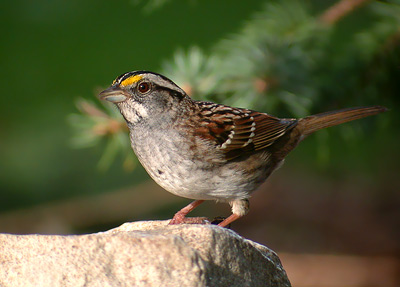
White-throated Sparrow
During spring and fall migration, as I marvel watching the birds before me, I sometimes catch myself shifting to a profound sense of awe when contemplating bird species most numerous, now extinct, that are the ancestors of these living birds. I wonder what other zonotrichia sparrows existed in the past. There is the Rufous-collared Sparrow of South America to consider, whose divergence isn't presently fully understood. But looking at its wing and back pattern, you can clearly tell its taxonomic classification in zonotrichia is correct. The DNA evidence backs it up.
Birds mean many things to different people, and also different things to a single individual. This is one of the reasons I love birds and birding. Not only can you experience zen-like moments of pure joy by watching them, but one can also advance an understanding of the natural world and its processes. Behavior, strategies, voice, appearance, range, sub-species and genetics are all puzzle pieces fitting so neatly together that "guess" doesn't even factor in my mind when considering their origin. That the zonotrichia sparrows could have settled into these particular patterns in North America in any other way approaches fantastical thinking. I would not be one to deny them their glorious natural history.
Range Maps BNA
Golden-Crowned Sparrow image USF&WS
All other sparrow images © 2007 Mike McDowell

















